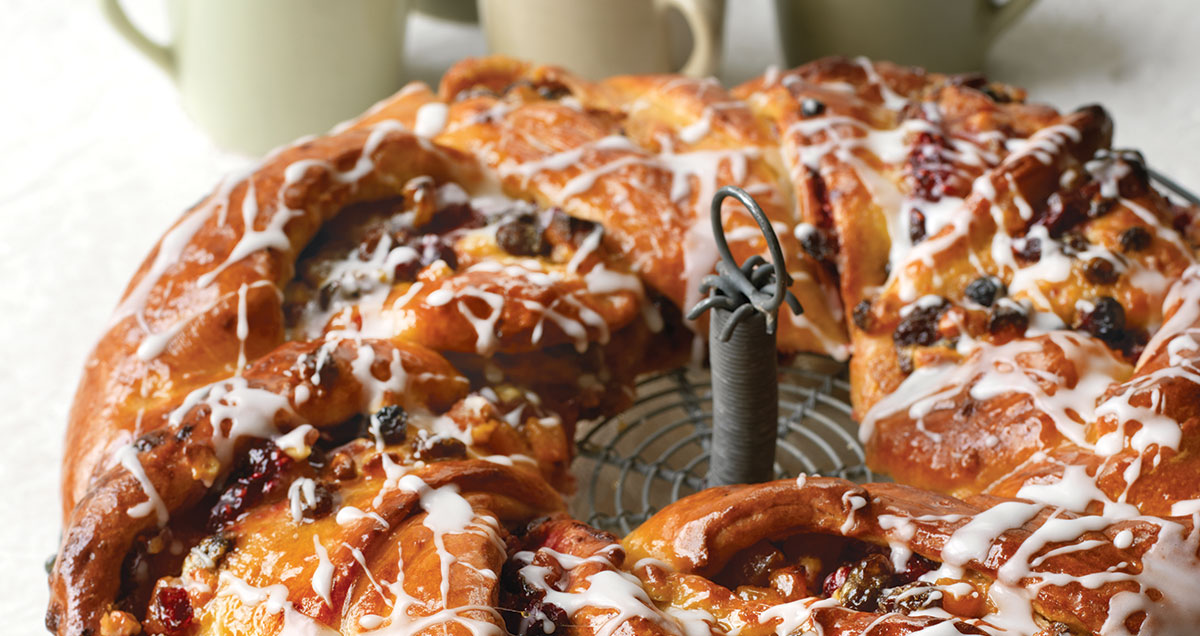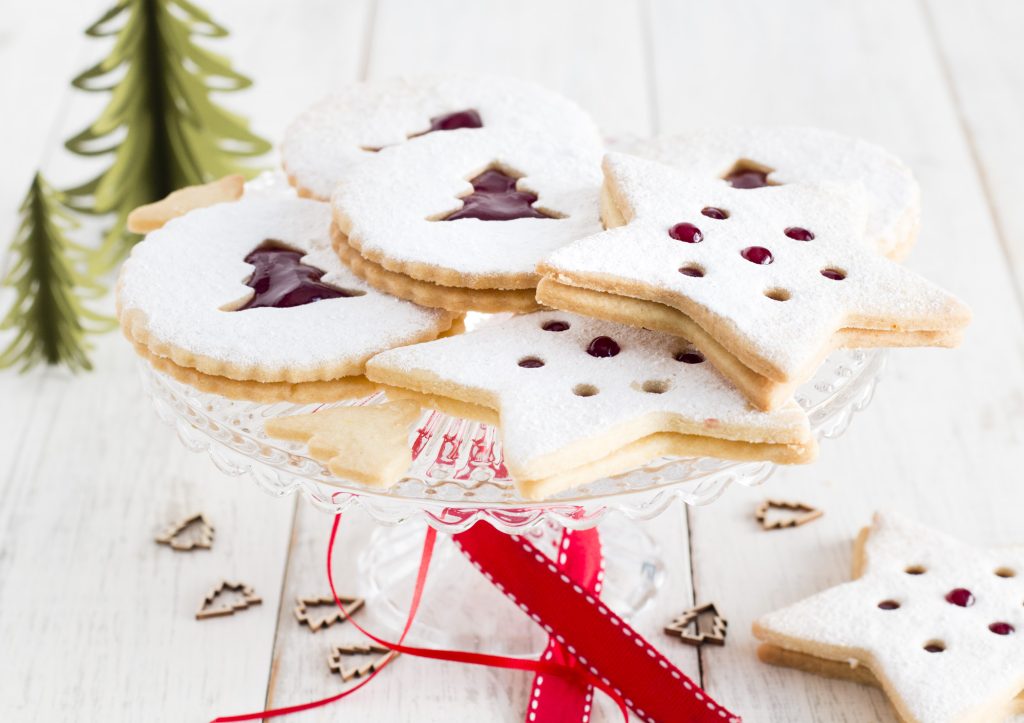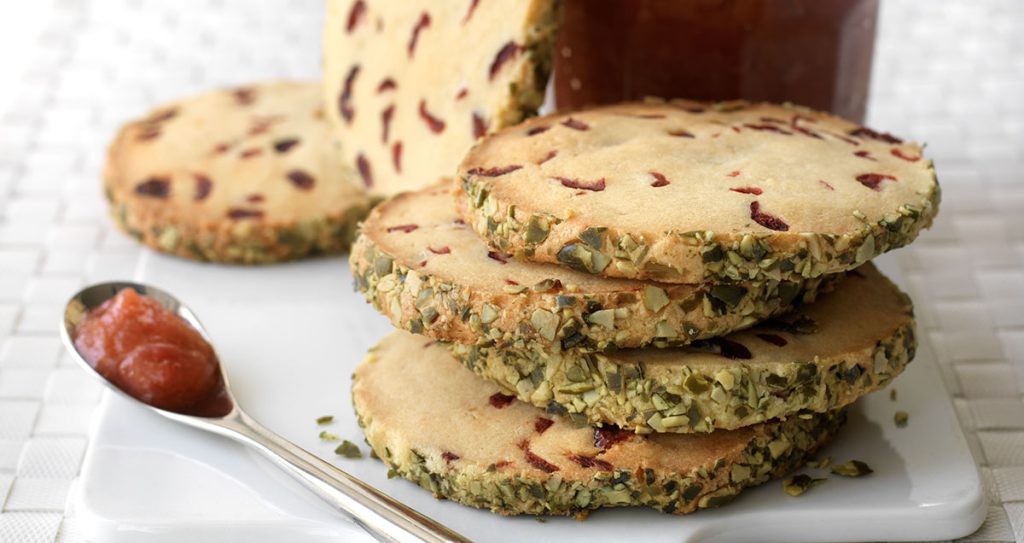, Step by step
Cranberry Couronne

This speciality bread is a lovely addition to the traditional dishes of this festive season.
Method
-
Step 1
Place the flour, salt and yeast in a large mixing bowl. Add the butter, milk and egg and use your hands to mix until you have combined all the flour and have a soft dough. Place the dough on a lightly floured surface and knead for 5-6 minutes until smooth and soft. (Or place all the ingredients in a mixer with a dough hook and knead for 3-4 minutes.)
-
Step 2
Lightly oil a bowl and place the dough in it. Cover with a towel and let it rise in a warm place for about one hour (until doubled in size).
-
Step 3
To make the filling, cream the butter and muscovado sugar together. Drain the apricots and add to the butter mixture. Then add the flour, chopped glacé cherries, cranberries, raisins and orange zest and mix all the ingredients together.
-
Step 4
Place the risen dough on a lightly floured surface and gently roll it into a rectangle (approximately 35 centimetres by 25 centimetres). Take care not to knock all the air out of it.
-
Step 5
Spread the filling evenly over the top of the dough and then roll it up tightly from the long end, pressing more firmly at the end to seal it.
-
Step 6
Cut the roll in half lengthways, leaving one end joined, and then twist the two lengths together. Bring the ends together to make a circle.
-
Step 7
Place the couronne on a baking tray lined with baking parchment or silicone paper and put it inside a plastic bag. Allow to prove in a warm place for 30-45 minutes or until doubled in size.
-
Step 8
Heat the oven to 180˚C and bake the couronne for 25-35 minutes, until golden brown. Place on a wire rack to cool.
-
Step 9
Add a little water to the apricot jam and heat until liquid enough to put through a sieve. Brush the sieved liquid on the warm couronne.
-
Step 10
Combine the icing sugar with a little water to make a thin icing to drizzle over the couronne. Leave to cool before serving.


